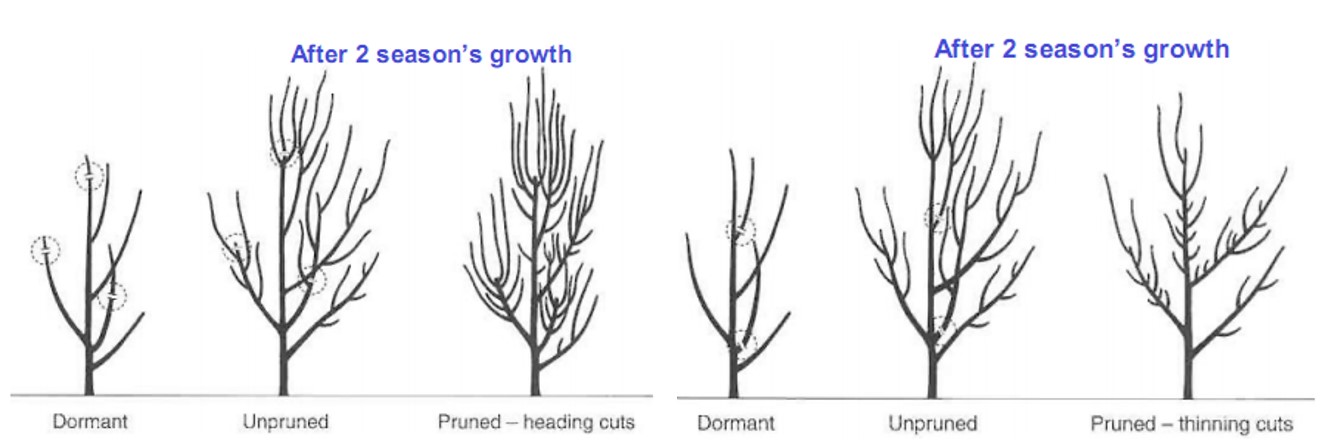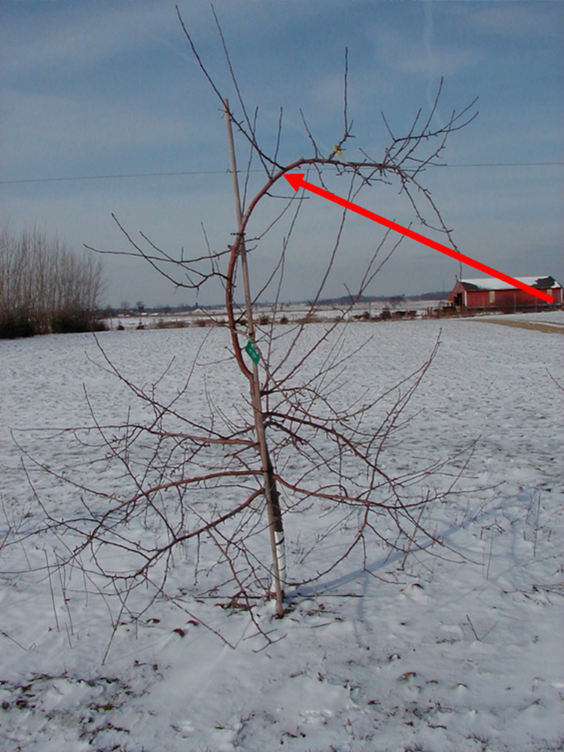Managing tree height and apical dominance in apple orchards
Concepts and practices to help maintain apical dominance and tree shape.

Managing tree height in orchards can be a difficult task. Once trees fill the canopy space and reach the top wire, they may become too tall, shading out nearby trees in the orchard, or they may have many laterals competing with the central leader (Figure 1). Cutting trees back excessively or using heading cuts can lead to a vigorous flush of growth at the top that is difficult to manage. In general, heading cuts result in overly dense canopies, as compared with thinning cuts (Figure 2).

Understanding apical dominance and related pruning concepts can help inform strategies for managing tree height. Apical dominance is the concept that the apical or terminal bud exerts control over nearby buds. A plant hormone produced in the apical bud, called auxin, is transported basipetally, or downward. This suppresses nearby (lateral) buds, preventing them from breaking. However, if the apical bud and the auxin produced in it are removed, buds directly below will break.
Strategic pruning cuts can be used to mitigate this concern. Before trees reach their full height or become overgrown, tops should be managed by selecting a strong apical shoot and removing any competing laterals during dormant pruning (Figure 3). This will maintain the central leader growing habit of the tree and keep the top narrow to prevent shading of the lower part of the canopy.

If tops become overgrown, the height may need to be reduced using bigger cuts. The result can be a big flush of vigorous upright shoots. One strategy that can be used to maintain apical dominance is to cut back to weak lateral growth (Figure 4). Sometimes this is not possible because trees are too tall or there are no good alternate shoots available. In this case, apical dominance can be maintained by replacing the natural auxins in a tree with a synthetic auxin application. NAA (1%) can be painted onto the tops where pruning cuts were made. This should be done 1) following a summer heading cut to prevent regrowth or 2) following a dormant cut, but only once the sap begins to flow in the spring (bud break). A summer pruning cut may be preferable in this case because the response will be less vigorous than a dormant pruning cut. However, there is often more time available during dormant pruning, and cuts may be easier to see.




 Print
Print Email
Email




